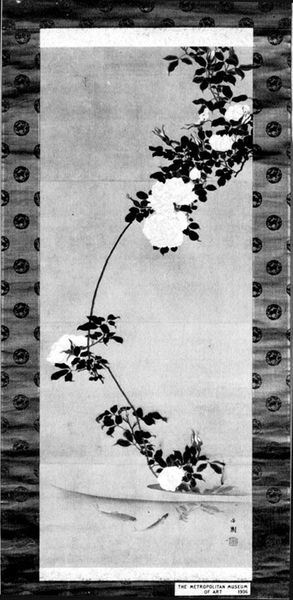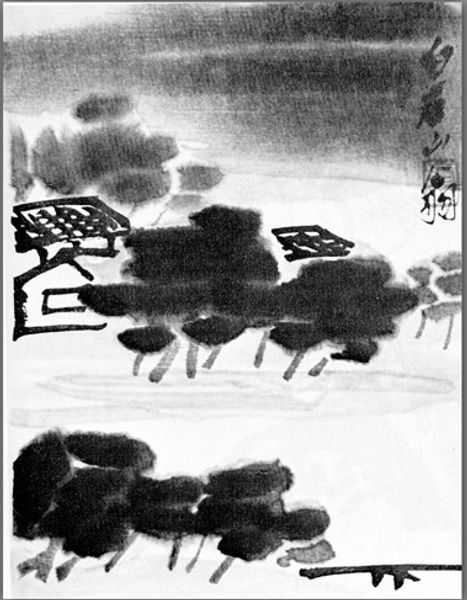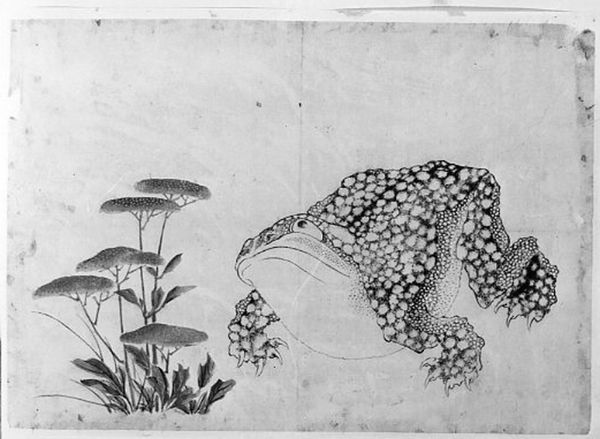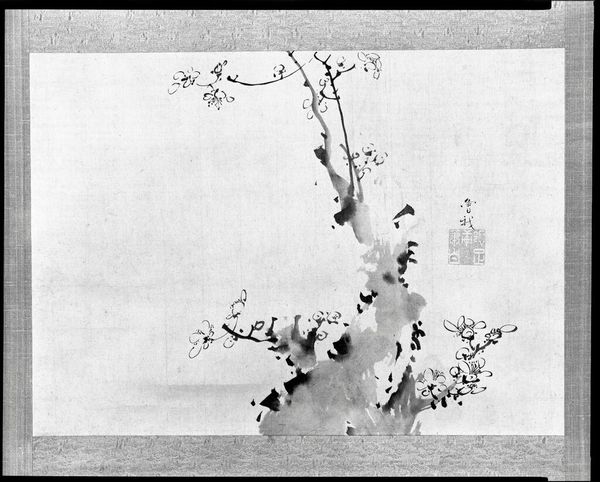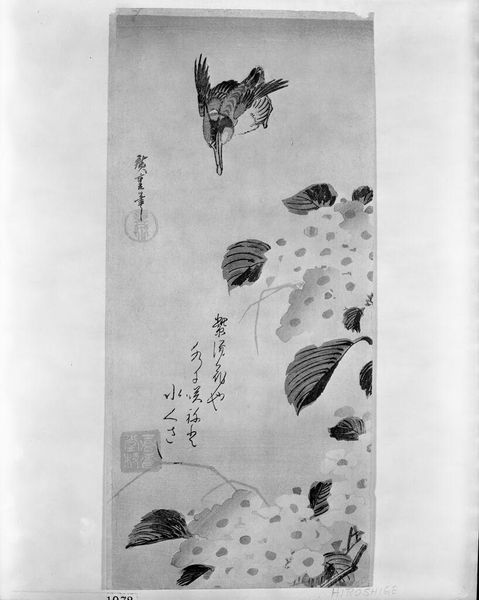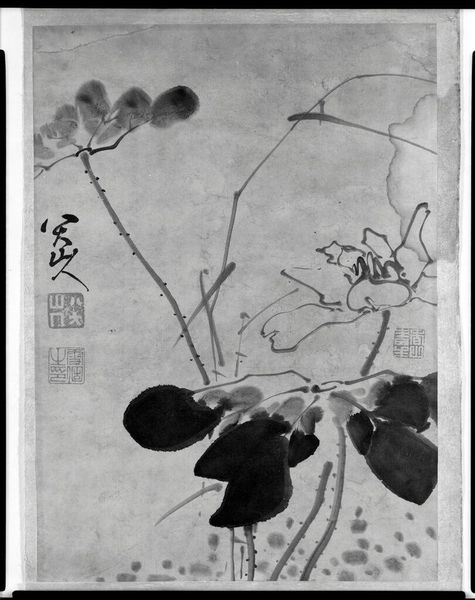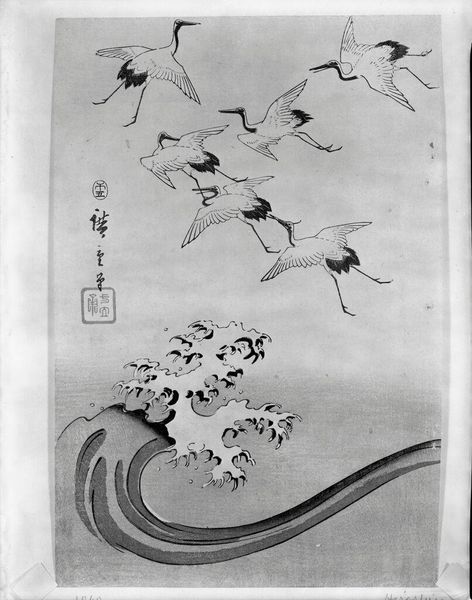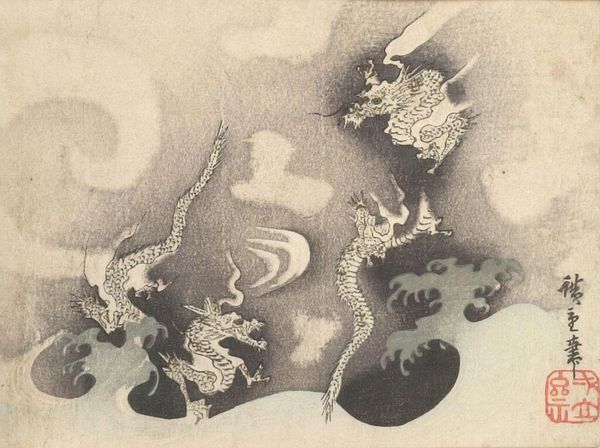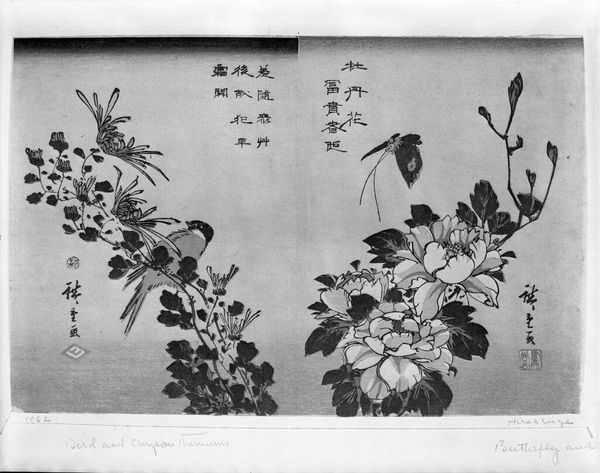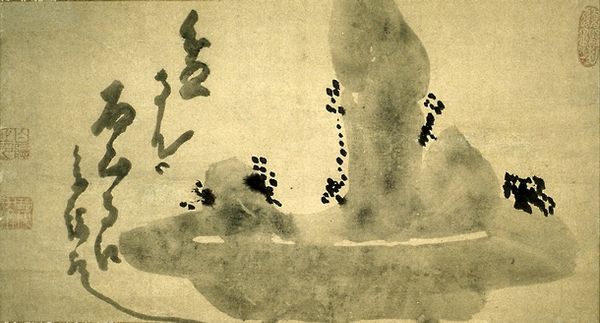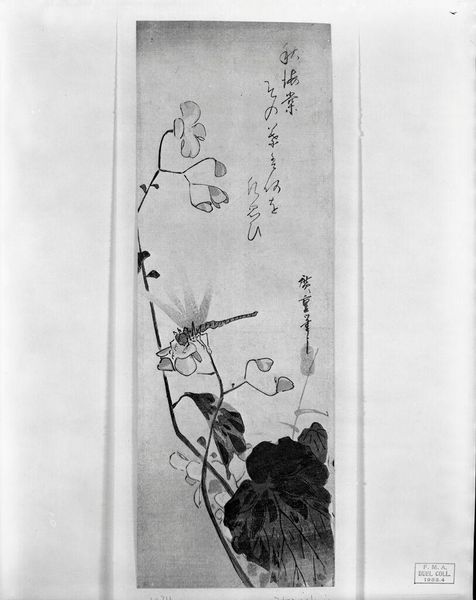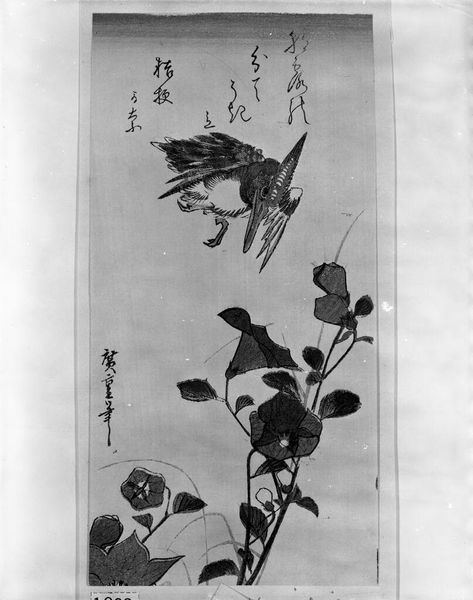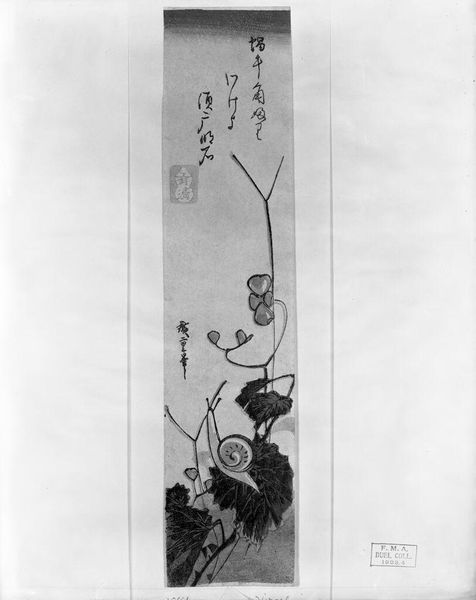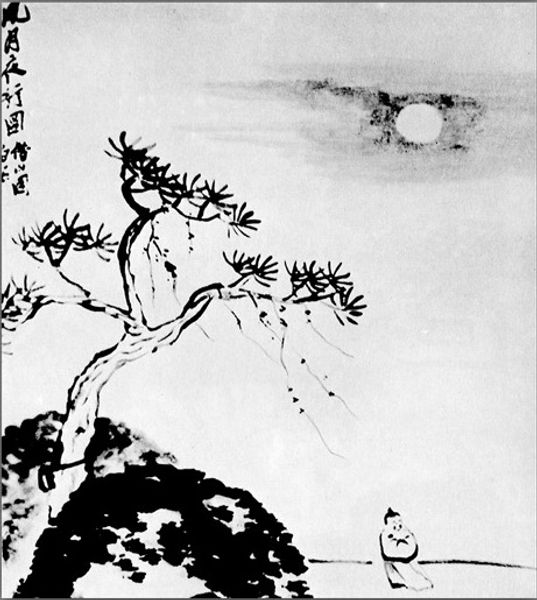
drawing, paper, ink
#
drawing
#
asian-art
#
flower
#
ukiyo-e
#
paper
#
form
#
ink
#
geometric
#
line
Dimensions: 9 3/8 x 12 1/4 in. (23.8 x 31.1 cm)
Copyright: Public Domain
Curator: Standing before us is an ink drawing on paper entitled "Chrysanthemums," attributed to the Hokusai School and dating roughly from 1800 to 1868. Editor: There's such a delicate energy about it, a lightness even though it's rendered in ink. The stark monochrome emphasizes the shapes and forms in a rather pleasing way. Curator: The Hokusai School, strongly influenced by ukiyo-e traditions, was working during a transformative period in Japanese art, when increased interaction with the West was beginning to shape artistic styles and patronage. Editor: It makes me wonder how the conventions around representing flora impacted artists. Are they consciously engaging with social or aesthetic expectations? Perhaps subverting or reinforcing them? How does art as a system reflect what Japanese culture says of ‘flower’ through painting practice? Curator: Precisely. The chrysanthemum itself held particular cultural significance, often associated with the imperial family and concepts of longevity and rejuvenation. Think about its usage even today. Editor: And how might the artist or patron have identified themselves within that framework? Ukiyo-e art often blurred the lines between high and low culture; a potent space for social commentary and perhaps even coded resistance. Did the creation or appreciation of the piece serve a political function, even a subtly subversive one? Curator: That connection between artistic expression and broader power structures cannot be ignored. We have to ask whose voices are represented. In this piece, there are very visible floral and organic imageries juxtaposed, which certainly evokes gender theories that question nature, beauty and feminine identities. Editor: It all speaks to how art isn't created in a vacuum. Each element is embedded within a web of social and historical context. It definitely compels me to delve deeper into the world it once inhabited. Curator: Yes, it encourages us to appreciate both the beauty and the historical context surrounding it, offering, really, new paths to reflect on intersectional and even overlooked histories.
Comments
No comments
Be the first to comment and join the conversation on the ultimate creative platform.
